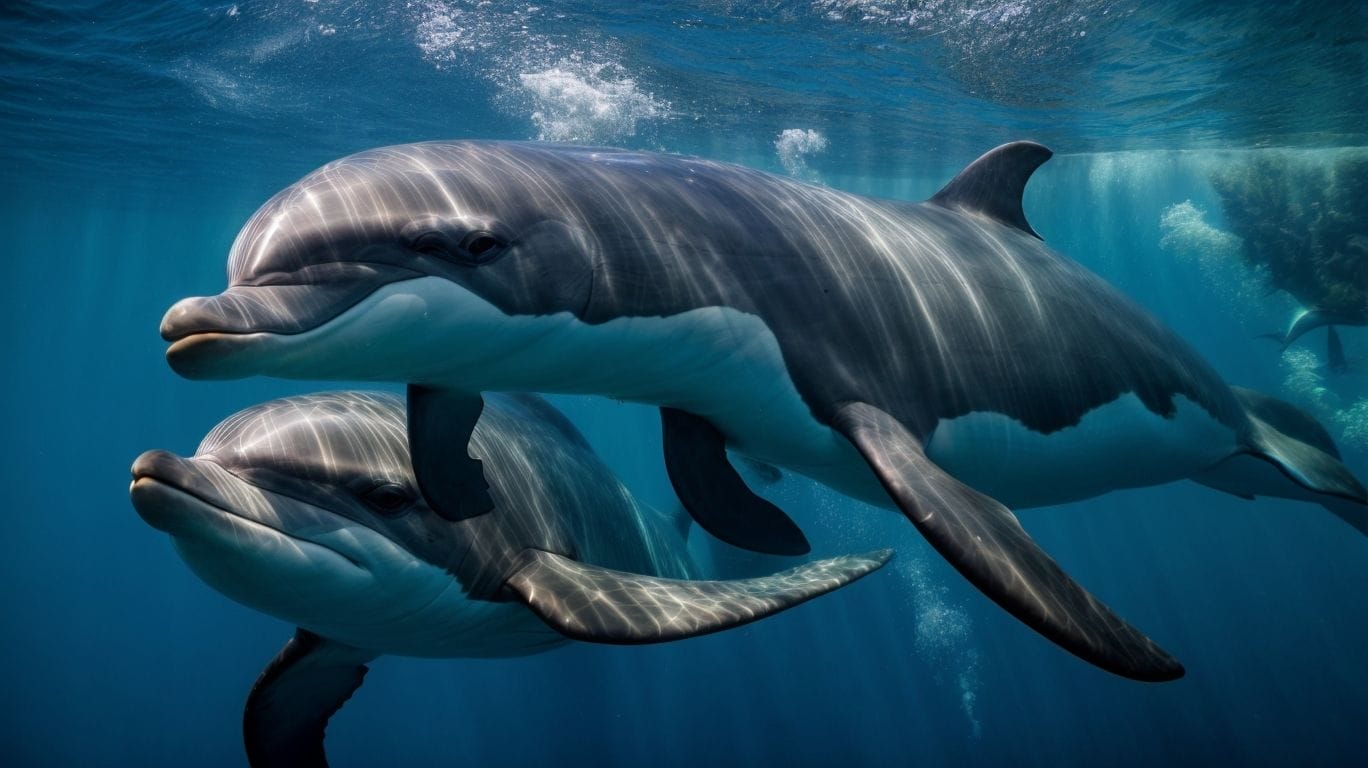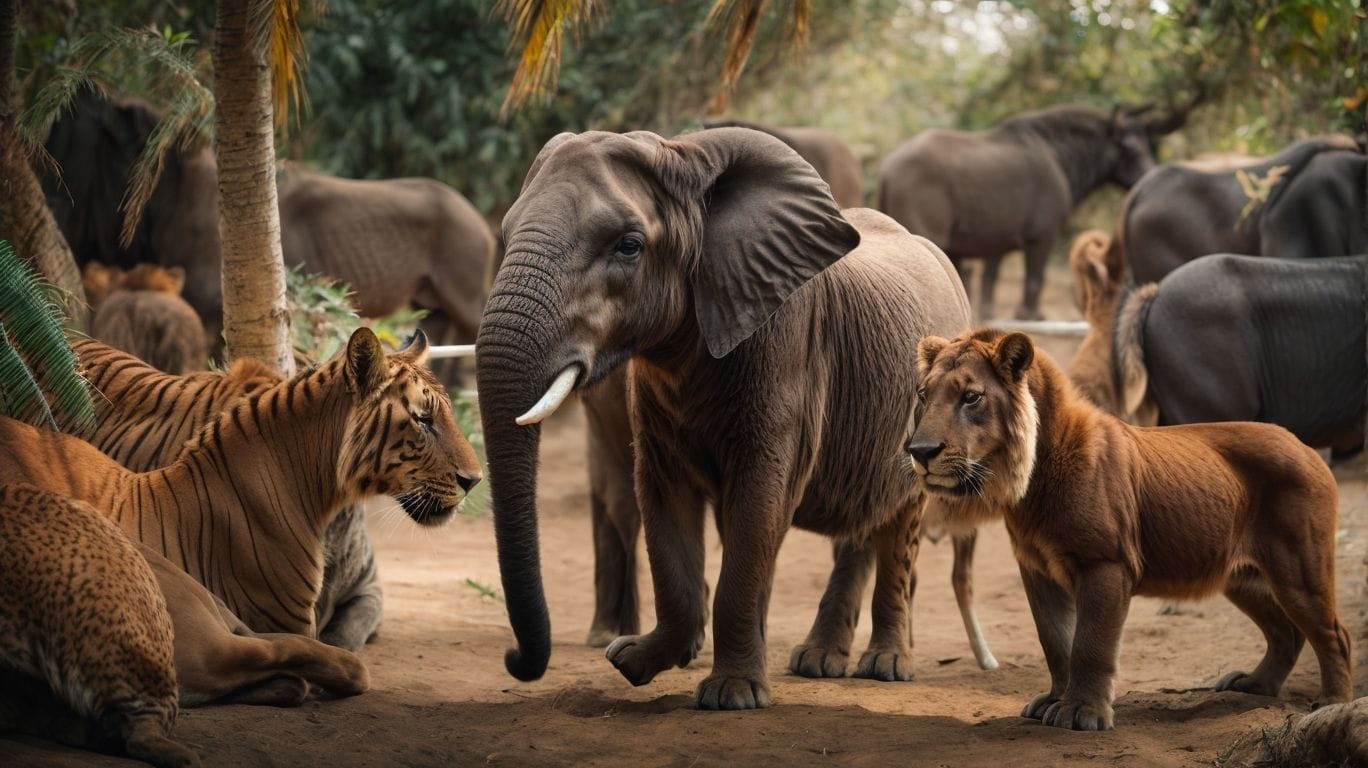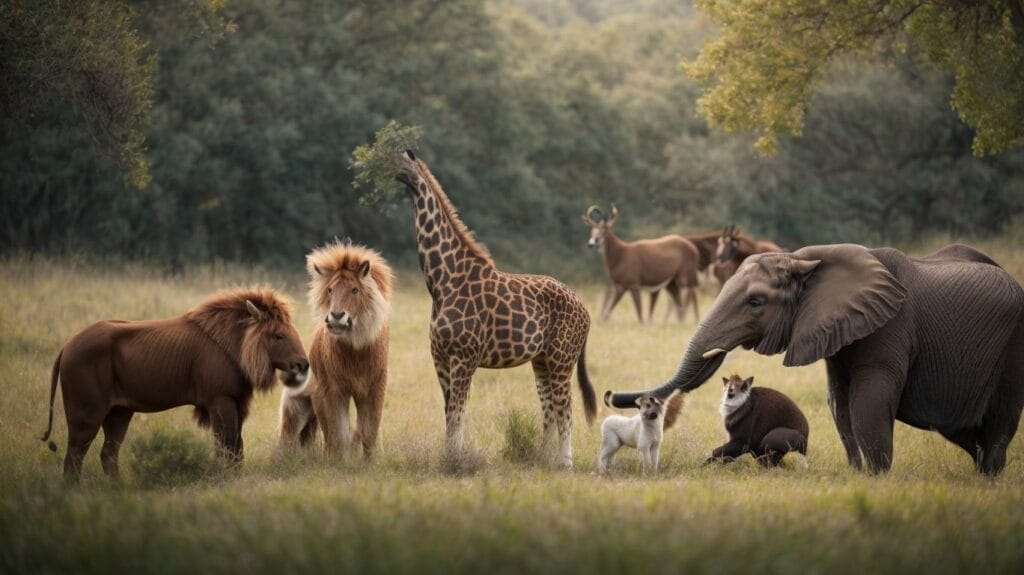Animals have been communicating with each other long before humans even existed. Animal communication is a fascinating field that explores the various ways in which animals communicate, interact, and share information.
To understand animal communication, it is important to define what it means. Animal communication refers to exchanging information between animals through various signals and behaviors. It is a way for animals to convey messages, express emotions, establish social hierarchies, and coordinate activities within their species.
Animal communication holds immense importance in the animal kingdom. It plays a crucial role in survival, mating, foraging, and protecting territories. Studying animal communication provides valuable insights into their behavior, cognition, and evolutionary adaptations.
Methods of animal communication encompass a wide range of signals and behaviors. Vocalizations, such as the songs of birds or the roars of lions, serve as audible signals. Body language, including posture, gestures, and movements, conveys important information. Chemical signals, like pheromones, help animals communicate through scent. Some animals even use electric signals to communicate, such as electric fish.
Numerous examples of animal communication exist across different species. Bees perform a waggle dance to communicate the direction and distance of food sources. Birds communicate through intricate songs and calls to establish territory or attract mates. Dolphins use whistles and clicks to navigate, communicate, and locate prey. Primates, such as chimpanzees, rely on facial expressions and gestures to convey emotions and intentions.
While animals have complex communication methods, it is important to understand that their communication differs from human language. Animals do not possess a language system with grammar and syntax like humans do. Nonetheless, their ability to communicate and understand specific signals within their species is remarkable.
Studying animal communication is crucial for gaining insights into the natural world and understanding the complex behaviors and social dynamics of different species. It helps us appreciate the richness and diversity of communication systems across the animal kingdom.
Key takeaways:
- Animal communication is diverse: Animals use various methods, such as vocalizations, body language, and chemical and electric signals, to communicate.
- Specific examples of animal communication: Bees use the waggle dance, birds communicate through songs and calls, dolphins use whistles and clicks, and primates rely on facial expressions and gestures.
- Animals may not have language, but communication is crucial. While animals may not have complex language systems like humans, studying animal communication is vital for understanding their behavior, evolution, and ecological dynamics.
What is Animal Communication?

Photo Credits: Petnarnia.Com by Joseph Miller
Did you know that animals have unique ways of communicating with each other? In this section, we’ll explore the fascinating world of animal communication and uncover the secrets behind their remarkable abilities. From defining animal communication to understanding its importance in their daily lives, dive into this captivating realm, where creatures convey messages through sounds, gestures, and chemical signals. Prepare to be amazed at the wonders of communication in the animal kingdom!
Definition of Animal Communication
Animal communication refers to the exchange of information between animals using various signals. It can be defined as the process by which animals convey messages, emotions, and intentions to one another. The definition of animal communication encompasses various forms, including vocalizations, body language, chemical signals, and electric signals. These signals are crucial in facilitating animal communication, allowing them to convey a wide range of information. This information includes warning signals to notify others of potential danger, signals to attract mates, signals to identify territories, and signals to coordinate group activities. Researchers studying animal communication gain valuable insights into animal behavior and evolutionary processes. Understanding the definition of animal communication is key to advancing our knowledge of the natural world and improving our understanding of animal cognition.
Importance of Animal Communication
Importance of Animal Communication
Animal communication plays a crucial role in the survival and well-being of animals. The importance of animal communication cannot be understated, as it is essential for survival and adaptation to their environment. It is vital for their social interactions, mating rituals, foraging, and detecting danger.
- Survival: Animals communicate to warn each other of potential threats, such as predator calls in birds.
- Reproduction: Species rely on communication to attract mates, with intricate displays like the waggle dance in bees.
- Social Bonding: Animals use vocalizations, body language, and chemical signals to establish and maintain social connections within their groups.
- Coordination: Communication helps animals coordinate group activities, such as hunting and migration.
Methods of Animal Communication

Photo Credits: Petnarnia.Com by Kyle Harris
Discover the fascinating world of animal communication through different methods. From vocalizations to body language, chemical signals to electric signals, animals have a diverse range of ways to convey their messages. Prepare to be amazed as we delve into the intriguing methods of animal communication and explore how they use these unique mechanisms to interact with one another.
Vocalizations
Vocalizations play a crucial role in animal communication. They are a form of expression used by various species to convey information, establish territory, attract mates, warn of danger, and maintain social bonds. Animal vocalizations include bird songs, whale songs, and primate calls. These sounds can be complex and diverse, with each species having its unique repertoire. Vocalizations are not only important for the survival and reproduction of animals but also provide valuable insights into their behavior and social interactions. Understanding and studying animal vocalizations can help us gain a deeper understanding of the natural world and our place within it.
Body Language
Body language is a vital component of animal communication and encompasses a variety of visual signals utilized to convey messages.
- Posture: Animals employ body posture to express dominance, submission, or aggression.
- Gestures: Movements of the head, limbs, or tail can effectively communicate specific intentions or emotions.
- Facial Expressions: Animals, such as primates, utilize facial expressions to convey emotions like fear, happiness, or anger.
- Eye Contact: Maintaining eye contact can serve as a signal of dominance or aggression.
- Proximity: The distance between animals can indicate comfort, intimacy, or threat.
A genuine anecdote that exemplifies the significance of body language involves a dog named Max. When Max tucked his tail between his legs and flattened his body against the ground, it signaled fear. Understanding his body language helped his owner recognize situations that made Max anxious and take appropriate measures to ensure his safety.
Chemical Signals
Chemical signals are a vital means of animal communication, allowing organisms to convey information by releasing various compounds. These signals serve various purposes, such as marking territory, attracting mates, or warning of danger. Different species rely on different chemical signals, including pheromones, to effectively communicate within their communities. For instance, ants utilize pheromones to create trails leading to food sources, while bees employ them to communicate the location and quality of nectar. Chemical signals are pivotal in animal behavior and survival, enabling individuals to navigate their environments and interact with others in their species.
| Animal | Chemical Signal |
|---|---|
| Ants | Pheromones for trail marking |
| Bees | Pheromones for food location |
| Birds | Chemical signals in nesting |
| Mammals | Pheromones for mating |
| Insects | Alarm pheromones for defense |
Electric Signals
Electric signals, also known as electrical pulses, play a vital role in the communication of animals. They serve as a means for species to transmit information and coordinate various behaviors. Aquatic animals, particularly electric eels and rays, are commonly associated with generating these signals.
Electric eels, for instance, possess the incredible ability to produce electric shocks with intensity reaching approximately 600 volts. This unique capability enables them to stun their prey and ward off potential predators. Apart from these defensive purposes, electric signals also serve several other functions, including navigation, prey detection, courtship displays, and intraspecies communication.
Exploring and studying electric signals provides valuable insights into the intricate communication systems of animals. It contributes significantly to our understanding of their behavior and interactions.
Examples of Animal Communication

Photo Credits: Petnarnia.Com by Austin Thomas
Animals have always amazed us with their remarkable abilities to communicate. In this section, we’ll dive into fascinating examples of animal communication that showcase their unique ways of conveying messages. From the intricate waggle dance of bees to the melodious songs and calls of birds, the whistles and clicks of dolphins, and the expressive facial expressions and gestures of primates, prepare to be captivated by the diverse and intricate language of the animal kingdom.
Bees: The Waggle Dance
The waggle dance is a fascinating form of communication used by bees, known as the Waggle Dance, to convey information about food sources to their hive mates.
- Scouting: Worker bees search for food sources outside the hive.
- Discovery: When a worker bee finds a promising food source, it returns to the hive.
- The Dance: The bee performs a series of figure-eight movements, known as the Waggle Dance, on the honeycomb.
- Direction: The angle of the dance indicates the direction of the food source relative to the sun.
- Distance: The dance duration and intensity of the waggles communicate the distance of the food source.
- Recruitment: Other worker bees observe the dance and are recruited to join the foraging efforts. Do Animals Talk to Each Other?
This remarkable communication method allows bees, also known as the Waggle Dance, to share information and optimize their foraging activities effectively.
Birds: Songs and Calls
Birds communicate through various songs and calls, vital in their behavior and interactions.
- Songs: Birds’ melodic and complex vocalizations, known as songs, are often utilized by male birds to attract mates and establish territories. For instance, the Nightingale showcases a beautiful courtship display through its melodious song.
- Calls: Birds also use shorter and simpler vocalizations called calls in different situations. Calls serve purposes such as warning others of danger or maintaining contact with their flock. An example of a bird call is the familiar “tweet” sound produced by a sparrow.
- Each bird species possesses its unique repertoire of songs and calls, which allows for species recognition and facilitates communication within their group.
Dolphins: Whistles and Clicks
Dolphins use whistles and clicks, known as their primary means of communication. Whistles serve as a tool for social interactions, conveying valuable information about identity, location, and even emotional state. On the other hand, clicks play a crucial role in echolocation, enabling dolphins to navigate and locate prey effortlessly. Dolphins have a repertoire of diverse clicks encompassing various frequencies and patterns, allowing them to convey precise messages. For instance, rapid clicks often signify excitement or agitation, while slower clicks indicate a state of relaxation. Through their exceptional utilization of whistles and clicks, dolphins effectively showcase their remarkable ability to interact and perceive their environment.
Primates: Facial Expressions and Gestures
Primates, such as chimpanzees and gorillas, heavily rely on facial expressions and gestures to communicate. These nonverbal cues, specifically facial expressions and gestures, convey emotions, intentions, and social hierarchy among primates. For instance, a raised eyebrow in primates can naturally signal surprise or fear, while displaying bared teeth could naturally indicate aggression. Furthermore, grooming is another significant gesture used in primate communication to establish social bonds and reduce tension within the group. Through the study and comprehension of these facial expressions and gestures, researchers gain valuable insights into primate behavior and social dynamics, enhancing our understanding of the complexity and richness of nonverbal communication in primates.
Do Animals Have Language?

Photo Credits: Petnarnia.Com by Paul Davis
Animals communicate with each other, but whether they have language is a subject of debate. “Do Animals Have Language?” Language, which involves grammar, syntax, and the ability to convey abstract concepts, is a complex communication system. While animals like bees, dolphins, and birds have communication systems, they lack the complexity and flexibility of human language. They may use sounds, gestures, or visual signals to convey information, but it does not meet the criteria of true linguistic communication. Animals may communicate to convey basic information like danger or mating calls, but they do not possess a language with the same depth and complexity as humans.
The Importance of Studying Animal Communication

Photo Credits: Petnarnia.Com by Samuel Sanchez
The Importance of Studying Animal Communication
Studying animal communication is paramount when comprehending the intricacies of wildlife interactions and ecological dynamics. By deciphering their vocalizations, gestures, or chemical signals, we can acquire valuable insights into their social structures, mating rituals, and even potential threats. This knowledge supports conservation efforts, ecosystem management, and wildlife rehabilitation. A prime example of the significance of studying animal communication lies in whale songs, which aid in tracking migration patterns and implementing measures to safeguard their habitats. Thus, it is undeniable that the study of animal communication holds immense importance.
For more information on animal communication, check out the Do Animals Talk to Each Other? on Quora.
To further emphasize the importance of studying animal communication and upholding biodiversity, it is highly recommended to show support for research and conservation organizations. By doing so, we actively promote animal communication studies while ensuring the preservation of various species.
Some Facts About “Do Animals Talk to Each Other?”:
- ✅ Animals have complex ways of communication. (Source: Irish Examiner)
- ✅ Animals can learn and recognize words and phrases. (Source: Irish Examiner)
- ✅ Prairie dogs can use words to describe threats. (Source: Irish Examiner)
- ✅ Dolphins can understand the sequence of words and interpret sentences. (Source: Irish Examiner)
- ✅ Gelada monkeys use sounds similar to human words and appear to speak in sentences. (Source: Irish Examiner)


